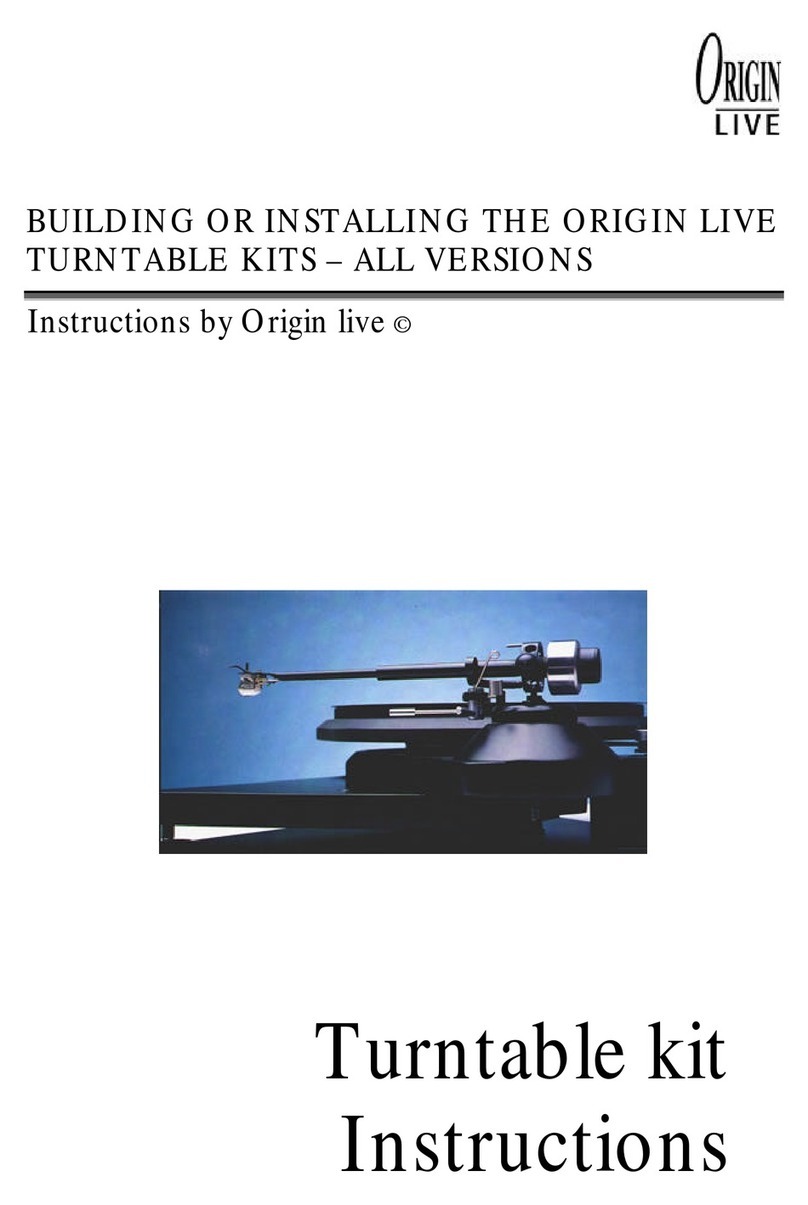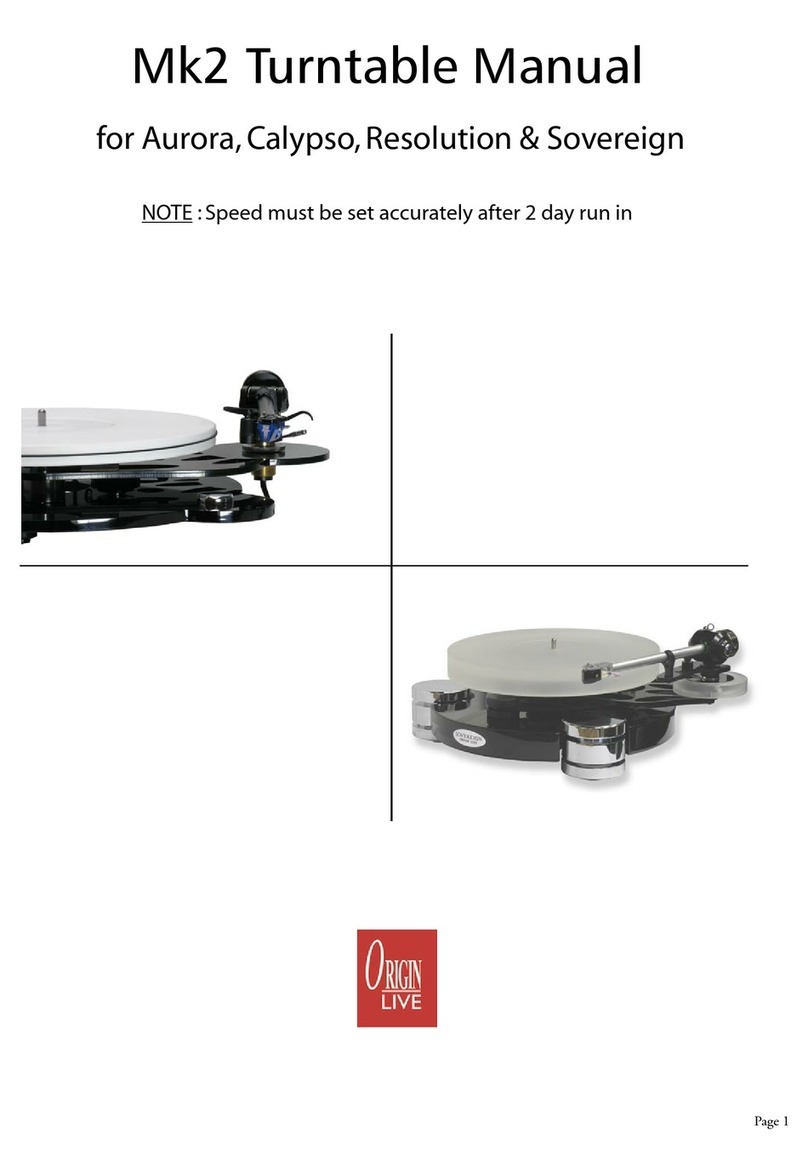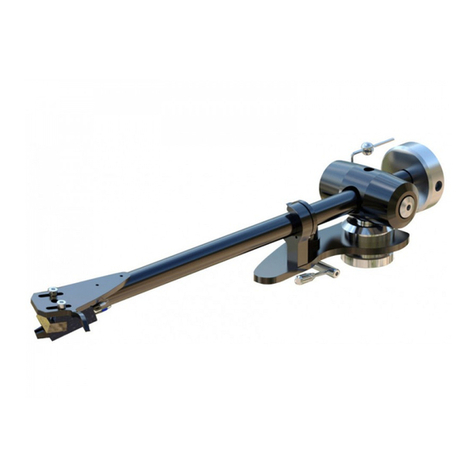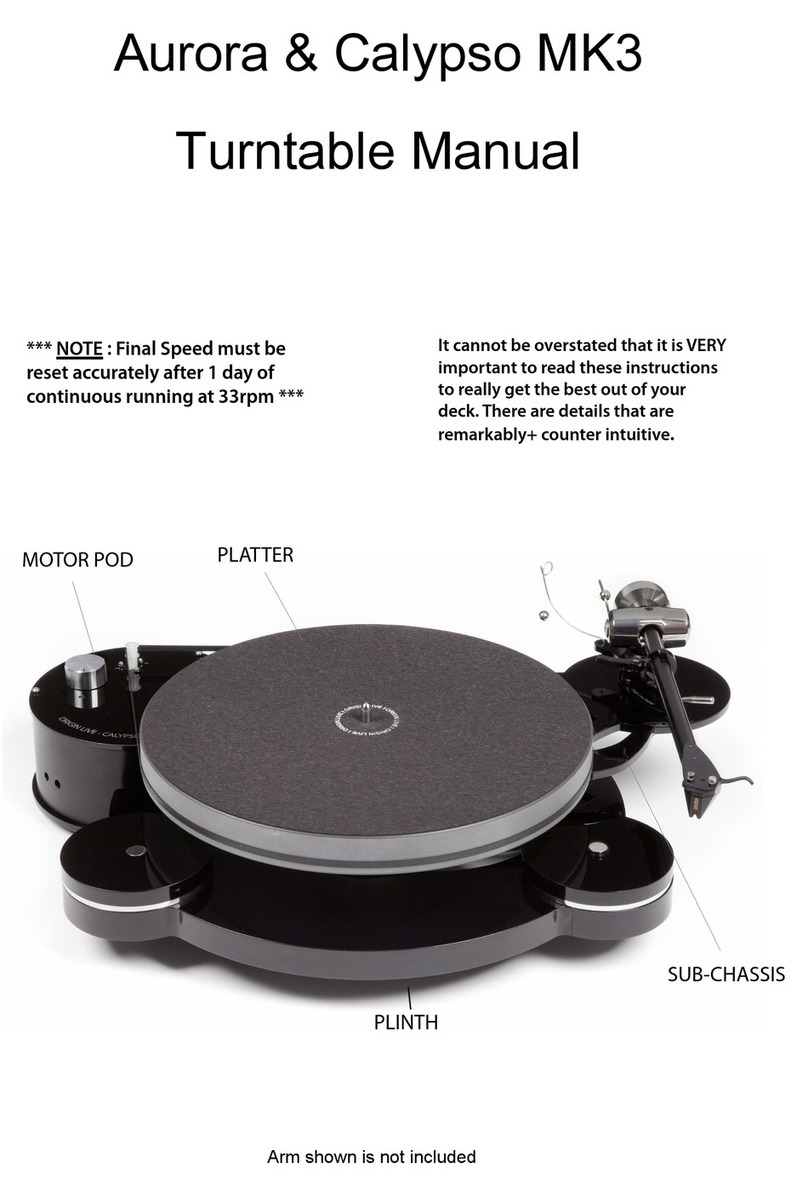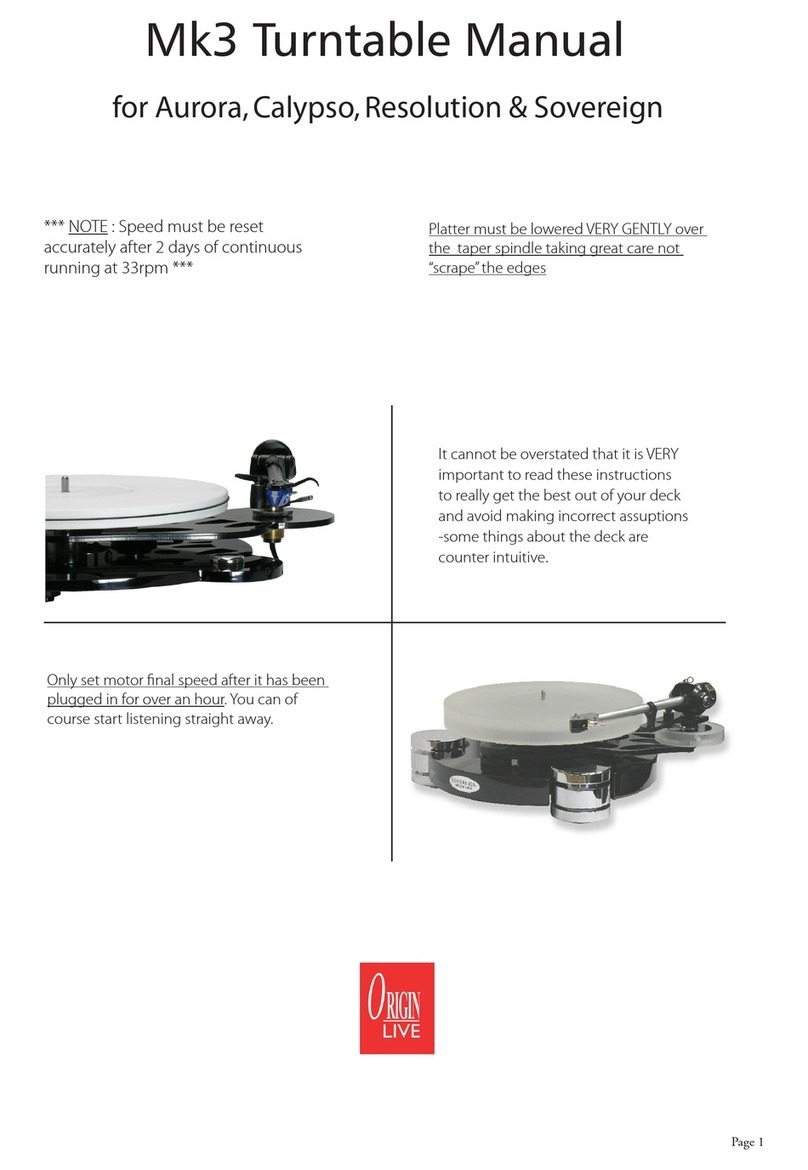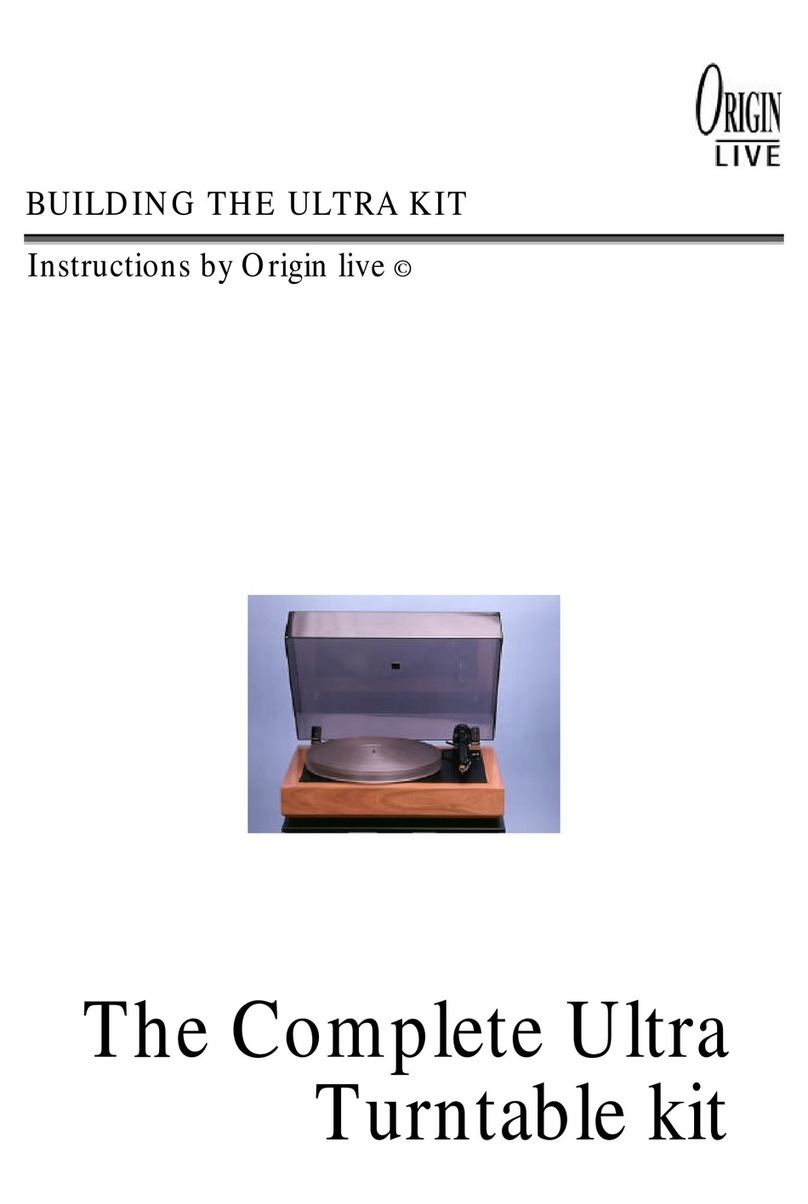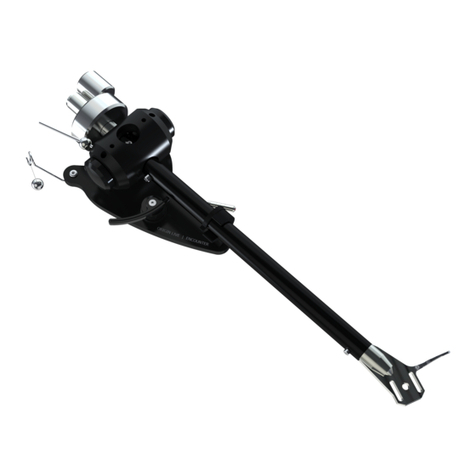Control nob operation
The motor is “off” when the speed control knob on the
pod is turned fully anti-clockwise and the indent on the
knob aligns to the reference point.
Turn the knob one click clockwise to turn the motor on
at 33.3 rpm - The second click clockwise is 45rpm
Operating the strobe
You can check the speed of your deck by placing the
strobe disc on the record to be played. The strobe rings
are labelled on the centre of the disc for speed and mains
frequency.
Use correct lighting
The strobe effect shows best in fluorescent light,
although an ordinary bulb held about 2 feet from the
strobe disc will also work fine. The bulb flickers at 50
Hz in the EEC and 60 Hz in the USA.
You can purchase bayonet fitting fluorescent or halogen
bulbs to fit normal lamps. Try to shut out daylight when
carrying out speed reading. Also be aware that energy
saving lighting with switch mode high frequency power
supplies or certain energy saving bulbs will not work
with the strobe disc.
Reading the strobe
As you play the record. watch the relevant ring on the
strobe disc. Read the speed as described in ne t sub-
heading until marks on the ring concerned appear
stationary. It sometimes helps to stare the strobe but
focus your eyes on infinity.
Alternative methods
There are other strobes which are easier to read such as
the KAB strobe which can be found on our web site
under vinyl measurement accessories.
There is also a phone app that you can download for
Android or IOS. You simply then place the phone on the
platter and it reads the speed (but not very reliably).
Best results are achieved with the phone close to the
centre of the platter and ideally it should be supported
over the centre spindle of the platter.
Notes on Belt & Motor running
Motor Tilt
Check that the belt rides clear of the flanges – nearly
touching is OK but if the belt sinks down to touch the
flange you need to either increase belt tension slightly or
adjust the tilt of the motor by turning the small cross-
head motor mounting screw positioned nearest the
platter.
Motor Noise
DC motors are often slightly noisy initially and never
completely silent in comparison to a/c motors. This may
be due in part to the high conductivity precious metal
brushes. These produce much lower levels of vibration
and hence better performance.
Like most turntable manufacturers we recommend you
leave the turntable running between changing records as
this reduces belt wear due to constant stopping and
starting.
Why measurements can be misleading
The figures on speed accuracy of the deck are well ahead
of industry standards however it's worth mentioning that
the Fleikhart measurement system is now well reported
on the web to be inaccurate due to off-centre discs and
poorly recorded tone. It has currently been withdrawn
from production.
Similarly Mobile phone apps are only a rough guide.
Fit the tonearm
Mounting Origin Live arms
All newer Origin Live arms have built in VTA
adjustment and can be fitted directly to the arm board as
illustrated below.
If you have an older Origin Live or Rega tone-arm which
has a threaded base but no vta adjustment, you can fit a
threaded VTA adjuster. The adjuster must be threaded
onto the base of the arm first and oriented such that the
flange is uppermost.
Insert your arm through the hole in the arm board.
Ne t fit the cork washer followed by the large clamping
nut as shown in the diagram on this page.
Lastly fit the tone-arm cables through the cable clip on
the underside of the deck. This improves performance
slightly and safeguards the cables from stressing their
joint at the arm base in the event of being “tugged”. The
cables should not be tight but form a gentle loop.
If clamping the cable is undesirable you can omit this
step.
